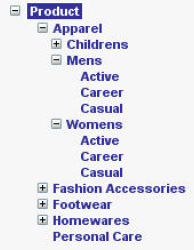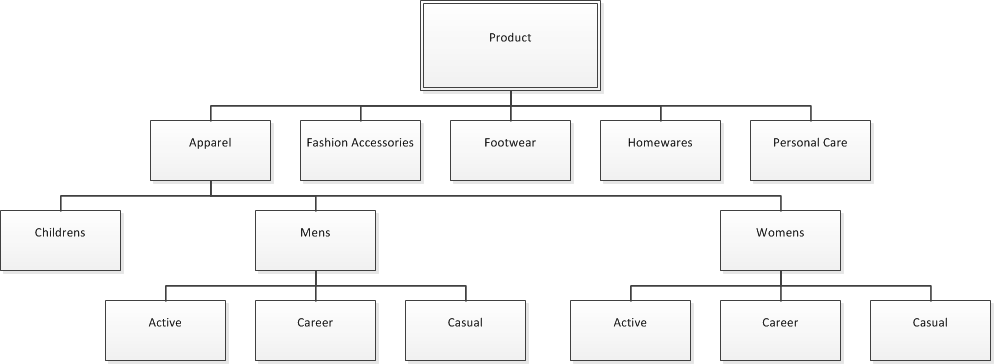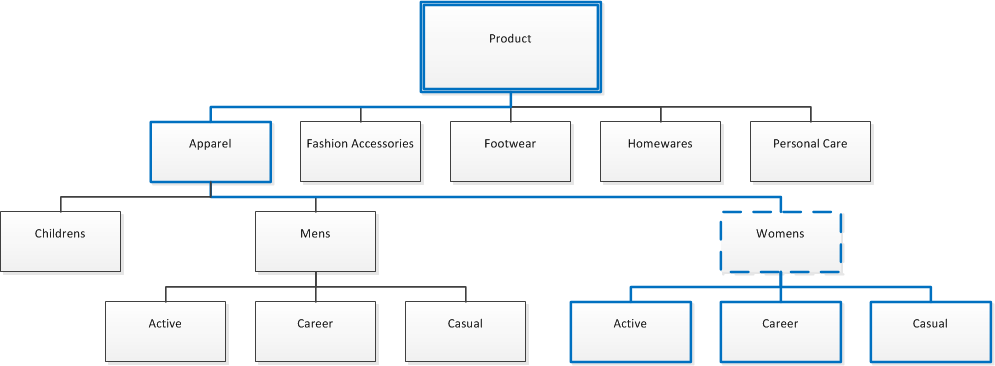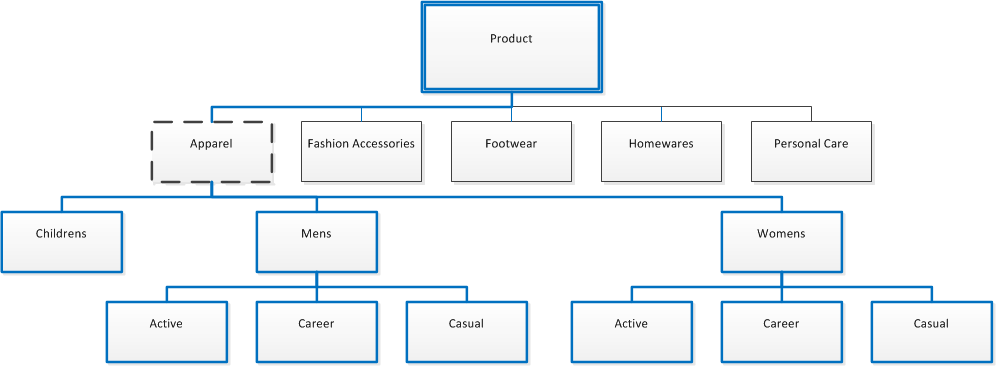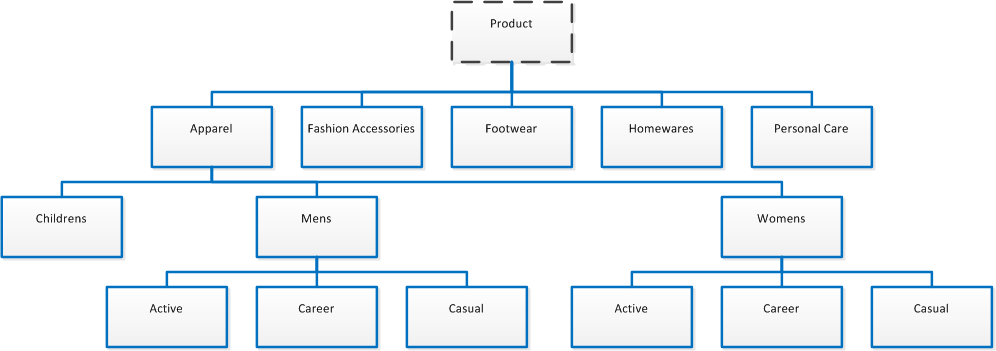Naming Views and Filters
There are certain rules that govern the naming of views and filters. View and filter names must be unique and adhere to the following naming conventions.
Unique Names and the Type Hierarchy
Because a view or filter is associated to a specific type in the hierarchy, view and filter names must be unique within the rules of the type hierarchy for each object.
If a view or filter is defined for men’s apparel products, the view or filter is tied to the Product/Apparel/Mens type. However, if you search for views or filters against the Product/Apparel/Mens type, the system also displays the views or filters defined at the Product level and the Product/Apparel level, as well as those at the Product/Apparel/Mens type.
Because PTC FlexPLM allows for the inheritance of views and filters defined at higher levels in the hierarchy, names must be unique looking up the hierarchy at any branch of which it is a descendant. The subtype Product/Apparel/Mens is a descendant of Product/Apparel, which is a descendant of Product.
In addition, because users can create views and filters for subtypes below the Product/Apparel/Mens type, which is also a subtype, the view and filter names must also be unique across all views or filters defined for each of these subtypes, because they are descendants of the Product/Apparel/Mens type. The applicable types in this case are the Product/Apparel/Mens/Active, Product/Apparel/Mens/Career, and Product/Apparel/Mens/Casual. If there were additional types defined below any of the Product/Apparel/Mens subtypes, similar naming rules would apply.
Rules governing the naming of sibling nodes, such as Product/Apparel/Mens and Product/Apparel/Womens in the example above, are different. It is not possible for users to simultaneously search both types. Therefore, views or filters defined against the Product/Apparel/Mens type can have the same name as one defined against the Product/Apparel/Womens type.
When selecting a subtype of Product/Apparel, you can only select one subtype (either Product/Apparel/Mens, Product/Apparel/Womens, or Product/Apparel/Childrens in the example above). Thus, a view or filter name defined for one type does not have to be unique when compared to the name of views or filters created for the remaining two types. Uniqueness is limited to the branch in the tree to which the type belongs.
The following is a graphical tree representation of the example product hierarchy that was provided previously.
| Dashed black represents the example type, and dark blue represents the types that must have unique names when compared to the dashed black type. Duplicate names are always prohibited within the example type. |
Given this product hierarchy, the following examples are true.
| The graphical tree representation is displayed first, and the discussion of it follows. |
A view or filter name created at the Product/Apparel/Womens type must have a unique name when compared against the names of all views or filters defined at the following levels:
• The Product/Apparel/Womens type itself
• Any type at a higher level that is in a single path. The applicable types in this case are:
◦ Product/Apparel
◦ Product
• Any type at a lower level that is in a multi-step path. The applicable types in this case are:
◦ Product/Apparel/Womens/Active
◦ Product/Apparel/Womens/Career
◦ Product/Apparel/Womens/Casual
A view or filter name created at the Product/Apparel type must have a unique name when compared against the names of all views or filters defined at the following levels:
• The Product/Apparel type itself
• Any type at a higher level that is in a single path. The applicable type in this case would be Product.
• Any type that is directly descended from the Product/Apparel type, as well as its descendants. The applicable types in this case would be all of the following:
◦ Product/Apparel/Childrens (and all subtypes; not expanded above)
◦ Product/Apparel/Mens (and all subtypes; listed below)
▪ Product/Apparel/Mens/Active
▪ Product/Apparel/Mens/Career
▪ Product/Apparel/Mens/Casual
◦ Product/Apparel/Womens (and all subtypes; listed below)
▪ Product/Apparel/Womens/Active
▪ Product/Apparel/Womens/Career
▪ Product/Apparel/Womens/Casual
A view or filter name created at the Product/Personal Care type must have a unique name when compared against the names of all views or filters defined at the following levels:
• The Product/Personal Care type itself
• Any type at a higher level that is in a single path. The applicable type in this case would be the Product type.
A view or filter name created at the Product type must have a unique name when compared against the names of all views or filters defined at the following levels:
• The Product type itself
• Any type at a lower level that is in a multi-step path. The applicable types in this case would be all product types that are not the Product type.
User Views and Filters
The following rules are applied when naming a user level view or filter:
• The name must be unique for the specific user’s set of views and filters.
• The name must not exist at the group or system level; however, the name can exist for different users.
Group Views and Filters
The following rules are applied when naming a group level view or filter:
• The name must be unique among all group level views and filters.
• The name must not exist at the user or system level.
• The name must not exist for a different group.
System Views and Filters
The following rules are applied when naming a system level view or filter:
• The name must be unique among all system level views and filters.
• The name must not exist at the user or group level.
